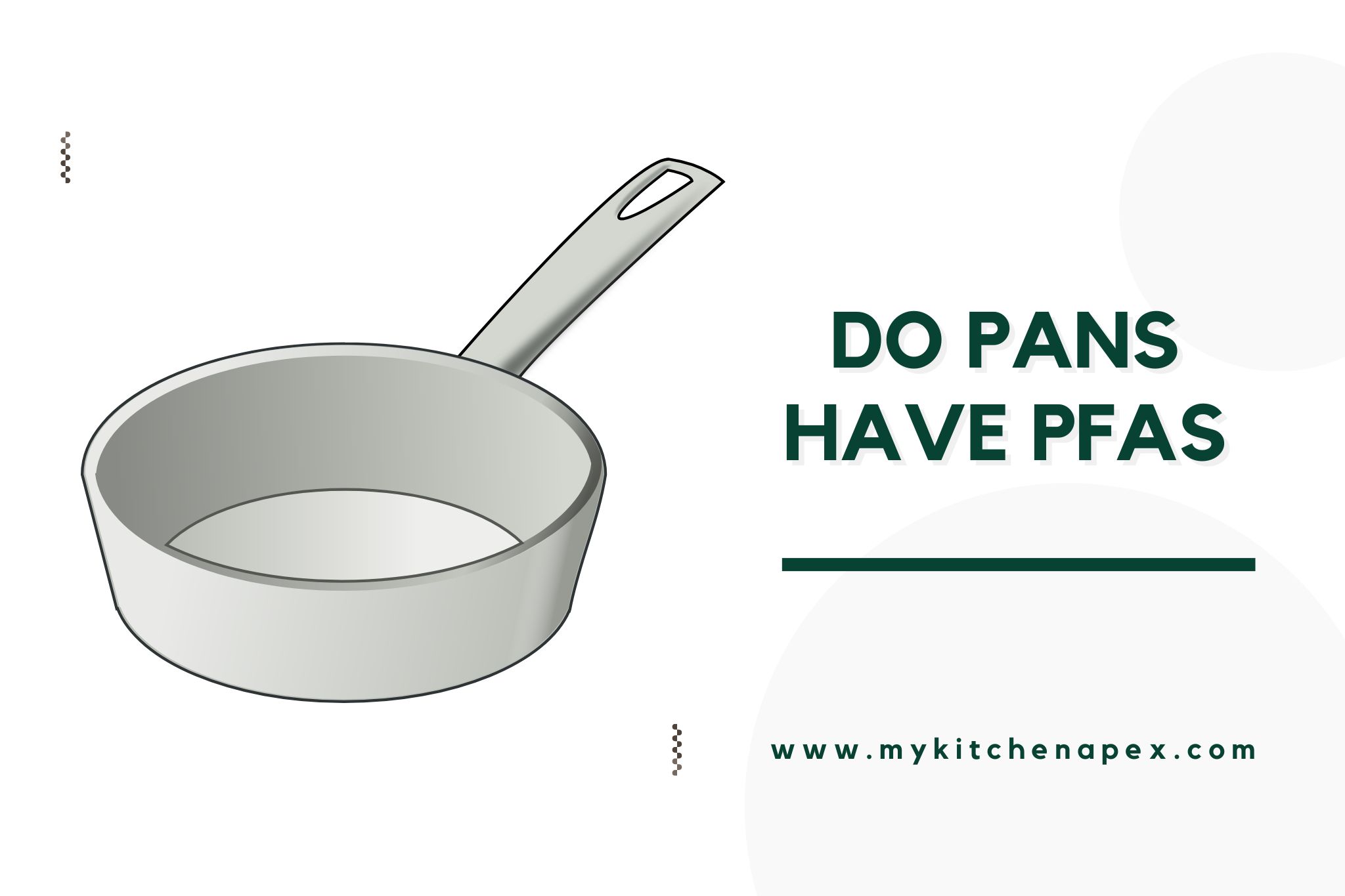Originally Created on: March 7, 2024 @ 12:10 pm
Are you concerned about the potential health risks associated with cooking with nonstick pans? Many people are becoming increasingly aware of the potential presence of PFAS, a group of man-made chemicals, in commonly used household products.
From nonstick cookware to food packaging, the presence of PFAS has sparked a flurry of questions and concerns about its effects on our health and the environment.
Recent studies have shed light on the prevalence of PFAS in various consumer products, raising important questions about the safety and long-term impact of these chemicals.
As more information comes to light, it’s important to understand the potential risks associated with using nonstick pans and other products that may contain PFAS.
Table of Content
Highlights:
- Pans can contain PFAS, a group of man-made chemicals
- Look for PFAS-free alternatives like stainless steel or ceramic
- Proper care and maintenance of cookware can minimize PFAS exposure
do pans have pfas
Yes, pans can have PFAS, which are per- and polyfluoroalkyl substances, a group of man-made chemicals commonly used in non-stick cookware. PFAS can be found in various types of pans such as Teflon-coated pans, which can release harmful chemicals when heated to high temperatures.
When choosing pans, it’s important to look for PFAS-free alternatives such as stainless steel or cast iron to reduce exposure to these potentially harmful chemicals.
It’s important to note that not all non-stick pans contain PFAS, as some manufacturers have started producing PFAS-free non-stick cookware. When shopping for pans, look for labels or information that specifically indicate the absence of PFAS.
It’s essential to handle and care for pans properly to minimize the release of PFAS, such as avoiding overheating and using wooden or silicone utensils instead of metal ones to prevent scratches on the non-stick surface that can lead to the release of PFAS.
By being informed and making conscious choices, it’s possible to reduce exposure to PFAS through cookware.
You May Also Like: does cookware have mercury
What are the dangers of PFOA in cookware?
PFOA, or perfluorooctanoic acid, is a synthetic chemical often used in the production of non-stick cookware. However, PFOA has been linked to various health concerns, including an increased risk of cancer, liver and thyroid issues, and developmental problems in children. The danger lies in the potential for PFOA to be released from the cookware when heated, contaminating the food and exposing individuals to its harmful effects.
Furthermore, long-term exposure to PFOA has been associated with an increased risk of cardiovascular disease and reduced fertility. PFOA can also persist in the environment and accumulate in the body, leading to prolonged health risks.
As a result, it is crucial to choose cookware that is PFOA-free to minimize the potential dangers associated with this chemical.
How do you prevent PFAS in cookware?
To prevent PFAS in cookware, it’s essential to opt for nonstick cookware that is specifically labeled as PFOA-free. PFOA is a chemical used in the production of Teflon, a common nonstick coating, and has been linked to health risks.
Look for cookware made from alternative materials such as ceramic, cast iron, or stainless steel, as they are less likely to contain PFAS.
Another way to prevent PFAS exposure is to avoid using nonstick cookware at high temperatures, as this can cause the release of toxic fumes. It’s important to properly care for and maintain cookware to prevent scratches or damage to the nonstick coating, which can lead to the release of PFAS.
Regularly inspect cookware for signs of wear and tear, and replace any items that show deterioration to avoid potential PFAS exposure.
Also Read: does cookware have lead
do ceramic pans have pfas
Ceramic pans do not contain PFAS, making them a safer alternative to traditional nonstick cookware. PFAS, or per- and polyfluoroalkyl substances, are a group of man-made chemicals that are commonly found in nonstick pans and have been linked to potential health risks.
The nonstick surface of ceramic pans is made from a sol-gel coating that is free of PFAS, providing a non-toxic and non-reactive cooking surface. This makes ceramic pans a popular choice for individuals looking to avoid exposure to harmful chemicals while cooking.
Overall, ceramic pans are a PFAS-free option for those who are concerned about the potential health risks associated with traditional nonstick cookware, providing a safe and reliable alternative for everyday cooking needs.
do copper pans have pfas
Copper pans do not contain PFAS, as PFAS is a type of synthetic chemical used in non-stick coatings, such as Teflon. Copper pans are typically lined with either stainless steel or tin, which do not contain PFAS.
This makes copper pans a safer alternative for cooking, as they do not release harmful chemicals when heated.
The use of copper pans is a popular choice for many chefs and home cooks due to their excellent heat conductivity and even heat distribution. Copper pans are also aesthetically pleasing and add a touch of elegance to the kitchen.
With the added benefit of being PFAS-free, copper pans are a great option for those looking for a safe and efficient cookware option.
do all non stick pans have pfas
Non-stick pans are typically coated with a material that prevents food from sticking, and this coating often contains PFAS, which are synthetic chemicals used in various products. While not all non-stick pans contain PFAS, many traditional non-stick coatings like Teflon do.
However, there are newer, more environmentally friendly alternatives on the market that are PFAS-free, such as ceramic and silicone-based coatings.
Consumers looking for non-stick pans without PFAS should specifically seek out cookware labeled as PFAS-free or PFOA-free. It’s important to carefully read product labels and do research on specific brands to ensure that the non-stick pans being considered do not contain harmful chemicals.
Seeking out cookware made with natural, non-toxic materials like ceramic or seasoned cast iron can provide safe non-stick cooking options without the presence of PFAS.
Also Read: are non stick cookware toxic
Final Thoughts
In conclusion, it’s important to be aware of the potential health risks associated with nonstick cookware containing PFAS and PFOA chemicals. To minimize exposure, opt for PFAS-free alternatives such as ceramic or copper pans, which provide safe and non-toxic cooking surfaces.
Avoid overheating nonstick pans, use wooden or silicone utensils, and properly care for cookware to prevent the release of harmful chemicals. By making informed choices and selecting PFAS-free cookware, individuals can reduce the potential health risks associated with traditional nonstick pans.

